
Ronald Searle in Heaven and Hell
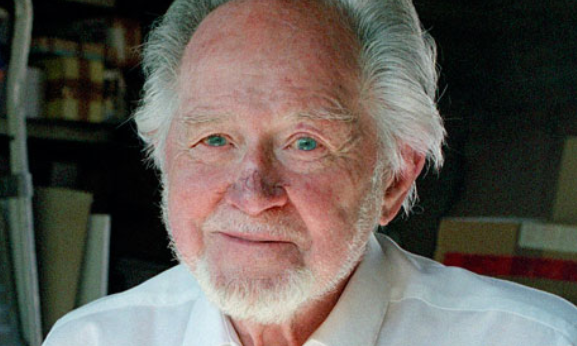
The Paris Sketchbook by Kaye Webb, who wrote the text, and her husband Ronald Searle (above), who drew the pictures, was first published in 1950. It is Paris in the spring, a record of the holiday the English couple spent there in May that year—after the freezing April rains. During the Covid lockdowns their dusty black-covered book on my shelves opened a nostalgic dream world of croissants and travel and was a reminder to rewatch Maigret (the Bruno Cremer version).
In 1950 it was a good time to visit Paris—no socialist mayor destroying the streets and monuments, no piles of garbage, no drugs and violence, no terrorism. No cars or cafés are burning in the Champs-Élysées. 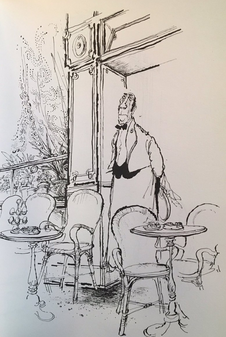 Frenchmen wear berets, Juliette Greco is singing in Saint Germain, fishermen dangle lines in the Seine, waiters with supercilious Searle noses sniff the air for customers, old ladies in hats with feathers take coffee and cakes on café terraces. Florid buildings lean eagerly and precariously forward or jostle to be seen in crowded streetscapes heavy with painted signs, as they balance uncomfortably on the unsettling vanishing points of lines which need their own vocabulary to be described—thick, thin and curly don’t seem quite enough. Paris, comfortably worn by tradition and the everyday, seen by Searle, leans on the fantastic—the dream of a man who has lived nightmares.
Frenchmen wear berets, Juliette Greco is singing in Saint Germain, fishermen dangle lines in the Seine, waiters with supercilious Searle noses sniff the air for customers, old ladies in hats with feathers take coffee and cakes on café terraces. Florid buildings lean eagerly and precariously forward or jostle to be seen in crowded streetscapes heavy with painted signs, as they balance uncomfortably on the unsettling vanishing points of lines which need their own vocabulary to be described—thick, thin and curly don’t seem quite enough. Paris, comfortably worn by tradition and the everyday, seen by Searle, leans on the fantastic—the dream of a man who has lived nightmares.
That year she is thirty-six and he is thirty. Kaye Webb was already twice divorced when they married about three years before. They live in London. She has been a magazine editor at Lilliput where his first St Trinian’s cartoon was published, and will go on to become remembered as Saint Penguin in the publishing trade—canonised for her work as Penguin’s children’s book editor and creator of the Puffin Club. Her text for the Paris Sketchbook is friendly, informative and efficient (lightly dull)—London is dreary and cold and she offers her readers a warming travelogue to a city with food and without bombed buildings or rationing. The book is of its time and place, a volume to sit beside the also dreamlike French Country Cooking (1951) by Elizabeth David. Travel and food dreams, good wholesome middle-class fantasy.
This essay appeared in a recent Quadrant.
Click here to subscribe
As Searle draws, his wife is nearby exercising the now banned pleasure of “delightedly exclaiming, ‘Oh isn’t it French!’” She says it at least twice in the book. On page 26 she describes a drawing as an attempt “to capture the sleek quality of my smile over the café filtre”. Her husband has experience in drawing relaxing feline figures. In her tight-waisted springtime dress she is very English. The pleasurable delight she took in the Frenchness of Paris has since been degraded into a bitter woke crime.
Any Frenchman asserting pride and joy in being French is likely to become despised and hounded. A whisper that one is native French, Français de souche, is attacked as racist and hopelessly right-wing. A Wikipedia article explaining why this is so runs to over 3000 words. In the June campaign for the French Legislative elections a little-known Macron candidate made himself well known by slipping the phrase into an election tract. Woke anger resulted; he surrendered and reissued the document without the expression; no one forgave him.
As the Searles holidayed, the US expatriate Janet Flanner noted in her regular “Letter from Paris” column in 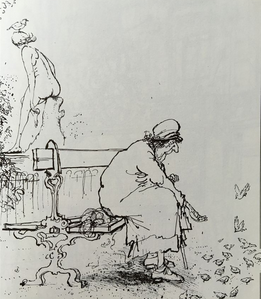 the New Yorker that food and strikes were plentiful in the capital, business was bad and the intellectuals were talking of religion and reading books by Simone Weil who “endlessly talked mysticism in a monotonous voice, and suffered almost uninterruptedly from headaches”. After those Arctic April showers there were marvellous morel mushrooms to be collected, nightingales were singing under the full May moon, and “hotels are jammed to the bathtubs with tourists from all latitudes, with enough cash for everything”.
the New Yorker that food and strikes were plentiful in the capital, business was bad and the intellectuals were talking of religion and reading books by Simone Weil who “endlessly talked mysticism in a monotonous voice, and suffered almost uninterruptedly from headaches”. After those Arctic April showers there were marvellous morel mushrooms to be collected, nightingales were singing under the full May moon, and “hotels are jammed to the bathtubs with tourists from all latitudes, with enough cash for everything”.
Vincent Auriol is in the Elysée Palace trying to work out how to govern the Fourth Republic, and de Gaulle is waiting in Colombey-les-Deux-Eglises for the opportunity to bring it crashing down—neither man is mentioned in the book—France is its convoluted self. Les trente glorieuses (The Glorious Thirty Years) are under way as the country rebuilds after the Second World War and prosperity spreads. War in Indochina is continuing, war in Algeria is coming, and young Alain Delon works in a butcher’s shop.
Amongst the monumental sites observed and preserved by the Searles is Carrie Finnel at the Lido, on the Champs-Élysées: “an outrageously funny comedienne, with startling control over her pectoral muscles”. Finnel is also known as “the Mammary Manipulator”—Searle’s illustration of the American burlesque queen indicates how she got this name and why she is worthy of monument classification.
In the drawing of Père Lachaise cemetery a small anachronistic female figure in mourning black has entered the scene—she might have time-travelled from an Edward Gorey drawing or be visiting from St Trinian’s. The Porte de Vanves market inspires a full-page portrait of a young couple united in misery and beauty—like the cover of a 1950s Livre de Poche paperback. Handsome and poverty-battered, they shelter under an umbrella. The goods they have for sale are spread out on a cloth at their feet. Searle draws them and his wife lists them—“a cup, a knife and fork, a key, a wheel, a door handle and a book”.
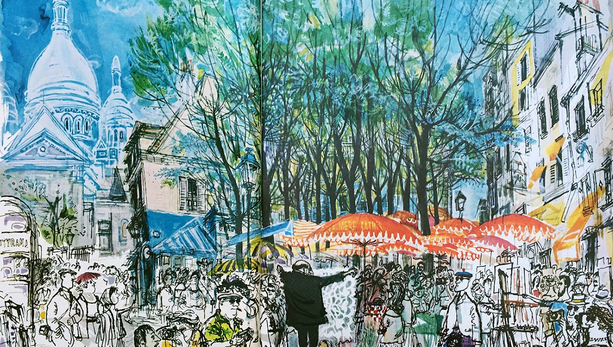
Unexpectedly, Fernandel appears on the stage during the recording of a public radio broadcast. In a bar they discover the wreckage of Kiki of Montparnasse (aged fifty) the once-famous artists’ model: “She was stumbling about the floor, holding on to a chair to do an arabesque, clumsily throwing her skirt over her face to display her orange silk knickers, making play with the jazz handkerchiefs slotted through her garters. Her audience looked disgusted or pitying (depending on whether they had heard her story).”
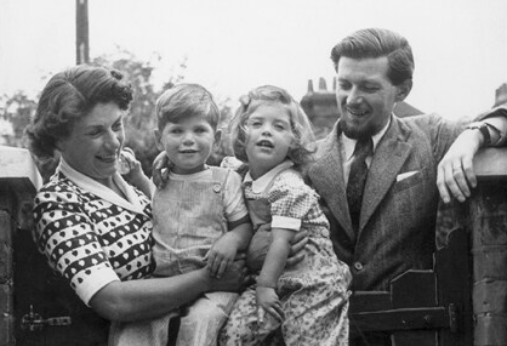
The Searles dedicate the Sketchbook to their children, the twins “who were left behind”. Kaye writes that they look forward to another long Paris holiday in the future, but that wasn’t to be. One weekend in 1961 she takes the twins for a weekend away and returns to find her husband has flown to Paris. She has been left behind—permanently. Her third divorce happens later in the 1960s.
THE Sketchbook is remarkable for having been drawn by a man who has not only been to hell but has become a great illustrator there. The book to read is To the Kwai and Back: War Drawings 1939–1945, published in 1986, with both words and drawings by Searle. A young man (aged from nineteen to twenty-five) drew the pictures and an old man (sixty-six) wrote the words.
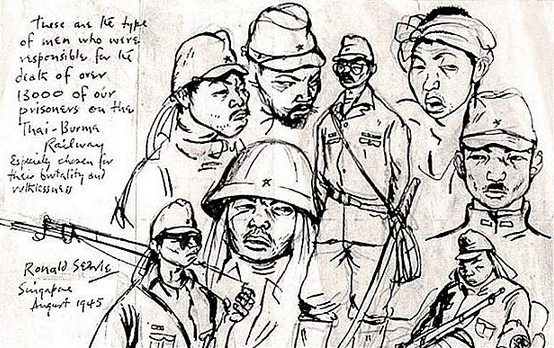
Searle, an art student, enlisted as a sapper in the British Army in 1939 and his military experience, like that of the young Australians with whom he shared captivity, was limited to being uncomfortably transported about the world simply to become a prisoner of the Japanese in Singapore: “Years of inept, incoherent and chaotic political and military mismanagement had reached a logical conclusion. But that was no consolation to us—the poor unfortunates who were now prisoners because of it.”
From 1942 to 1945 he was imprisoned in Changi, apart from a period when he was sent to slave on the building of the Siam-Burma Railway. The young artist recorded the brutality, disease and inhumanity in hundreds of drawings which he made quickly and secretly and was able to hide. Like other war artists, including the Australian Murray Griffin, he set out to record “what happened during those lost and more or less unphotographed years”—but he also worked to become the artist he wanted to be, if he survived.
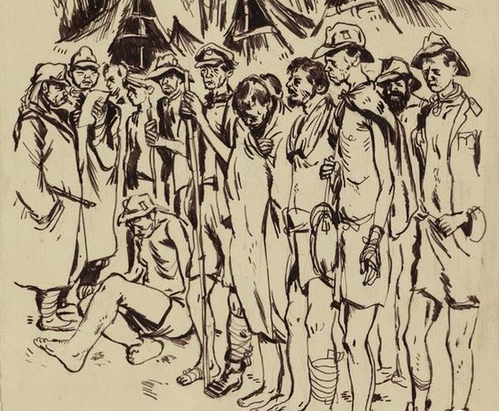
The Japanese infatuation with samurai and bushido ideals is undermined, to Western eyes, in Searle’s eyewitness illustrations of pitiless and stupid brutality and atrocity. His older self is clear-eyed: “But, unlike the medieval warriors in the jidai-geki (period drama) of Kurosawa, there were no heroes. Merely killers and survivors.” Russell Braddon, an Australian prisoner and friend of Searle, writing in End of a Hate (1958), presented a different interpretation: “The wartime atrocities of the Japanese were not, to them, atrocities … They were, on the contrary, the products of the normal Nipponese code of military honour.” The Japanese themselves agree with Braddon and have placed locomotive C56 31, the first engine to run on the death railway, in the museum at the Yasukuni Shrine in Tokyo—it is meticulously maintained, the victims ignored.
The prisoners endured with an ideal today derided and abused in Australia: “Yet somehow we still clung blindly to the idea that Good must triumph over Evil, and that sooner or later ‘our lot’ would come and get us out of there.” Braddon’s Naked Island (1951) was illustrated by Searle and its dedication is equally foreign to our present: “This book is written as one man’s fear of things that lie ahead. It is also written as one man’s tribute to the Britishers’ capacity for living fearlessly and gently.” Such beauty of sentiment invites modern mockery—people who can’t explain what a woman is have problems with basic concepts.
As the Siam railway project of futility neared its end Searle was close to death and was placed in a tent for the dying: “Between bouts of fever I came round one morning to find that the men on each side of me were dead, and as I tried to prop myself up to get away from them, I saw there was a snake coiled under the bundle on which I had been resting my head.” He survived, just, and unable to move was left in Kanchanaburi when other survivors were returned to Changi:
I was adopted by a cheerful bunch of Australians and two Dutch officers, all of whom were still in rather a mess themselves. They nursed me, spent their money on eggs and extras from the natives for me, washed me and, of all unlikely things, procured some sulphur drugs from somewhere for me. Anything was possible for the Australians—even the impossible. They saved my life and got me back on my feet again.
And then he returned to Changi. Braddon describes Searle in the prison as news of the June 1944 Allied landing in France was shared by the prisoners:
“Soon,” said Piddington, stammering eagerly, “this bloody war will end.”
I nodded. Chris nodded. Ron Searle just went on drawing—he was drawing a cat. He had drawn it fifty times. It was a cat we intended eating when he had finished drawing it, but apparently he was using too many lines. So whilst he, detached and determined, started his fifty-first drawing of the cat we three sat and thought about the miracle of the end of the war.
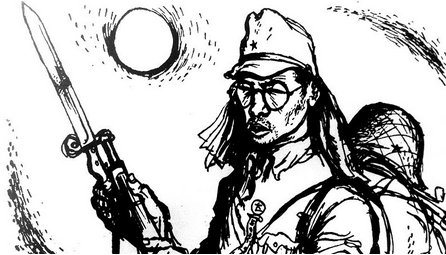
SEARLE’S St Trinian’s cartoons (1941 to 1953) are now published in Penguin Classics. Braddon had seen their genesis in Changi and described the artist “economising with his lines (whatever that means) and evolving further atrocities for his schoolgirl cartoons”. The obvious influences include beheadings (real), beatings (real) and tortures (real) but in the world of his schoolgirls the drawings are humorous, unreal and affectionate. It surely wasn’t what his Japanese jailers intended.
In 1949, after a breakdown and a suicide attempt in Australia, Braddon arrived in London and was welcomed by Kaye and Ronald and offered living space at the back of the artist’s studio: “I moved in at once, was charged no rent and would get up each morning when Ron arrived to work. It was exactly like Changi—only much pleasanter.”
After leaving Kaye and his children, Searle remarried in France, moved from Paris to a village in Haute Provence and died there in 2011, nine months after his wife. At the age of twenty-five the released prisoner made a discovery which his older self still respected: “We now had in our grasp a thorny, but true, measuring-stick against which to place the things that did or did not matter in life.” He did not suggest what discovery his wartime captors had made about themselves—apart from sharing their belief that a hundred-year war had just begun.
Madam: Archbishop Fisher (July-August 2024) does not resist the attacks on his church by the political, social or scientific atheists and those who insist on not being told what to do.
Aug 29 2024
6 mins
To claim Aborigines have the world's oldest continuous culture is to misunderstand the meaning of culture, which continuously changes over time and location. For a culture not to change over time would be a reproach and certainly not a cause for celebration, for it would indicate that there had been no capacity to adapt. Clearly this has not been the case
Aug 20 2024
23 mins
A friend and longtime supporter of Quadrant, Clive James sent us a poem in 2010, which we published in our December issue. Like the Taronga Park Aquarium he recalls in its 'mocked-up sandstone cave' it's not to be forgotten
Aug 16 2024
2 mins







